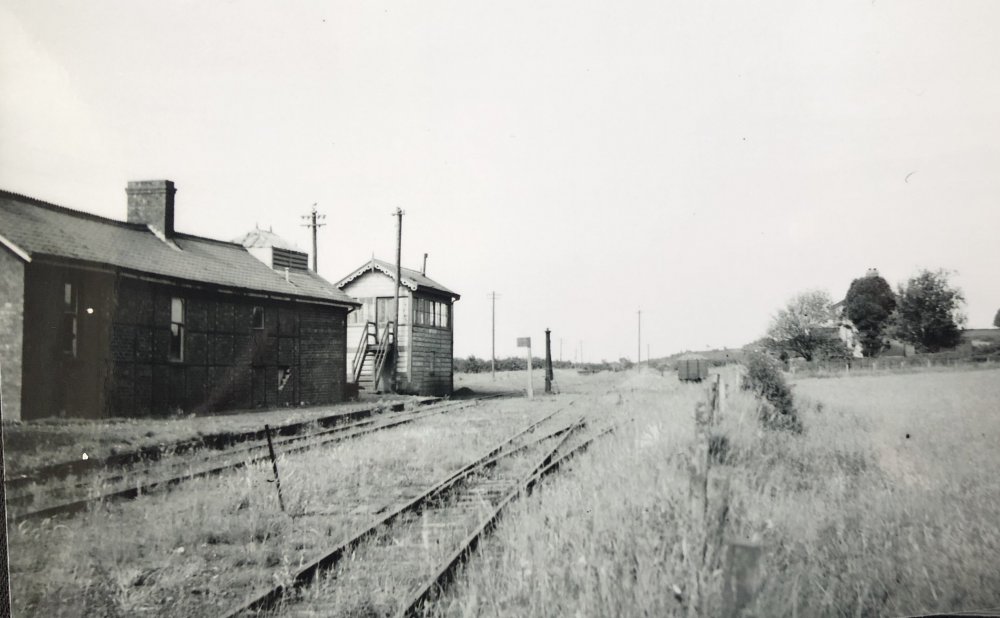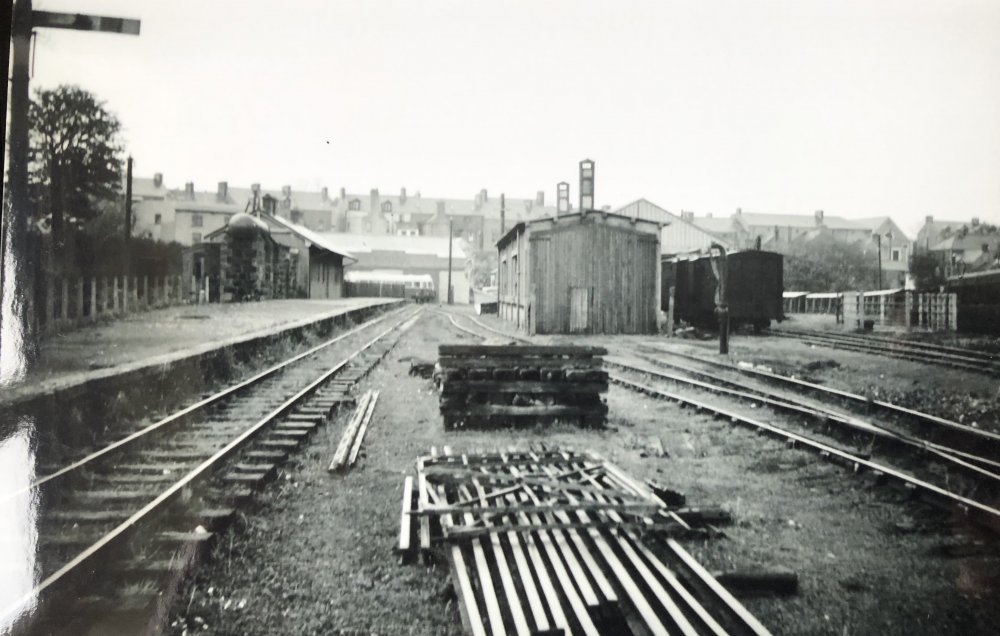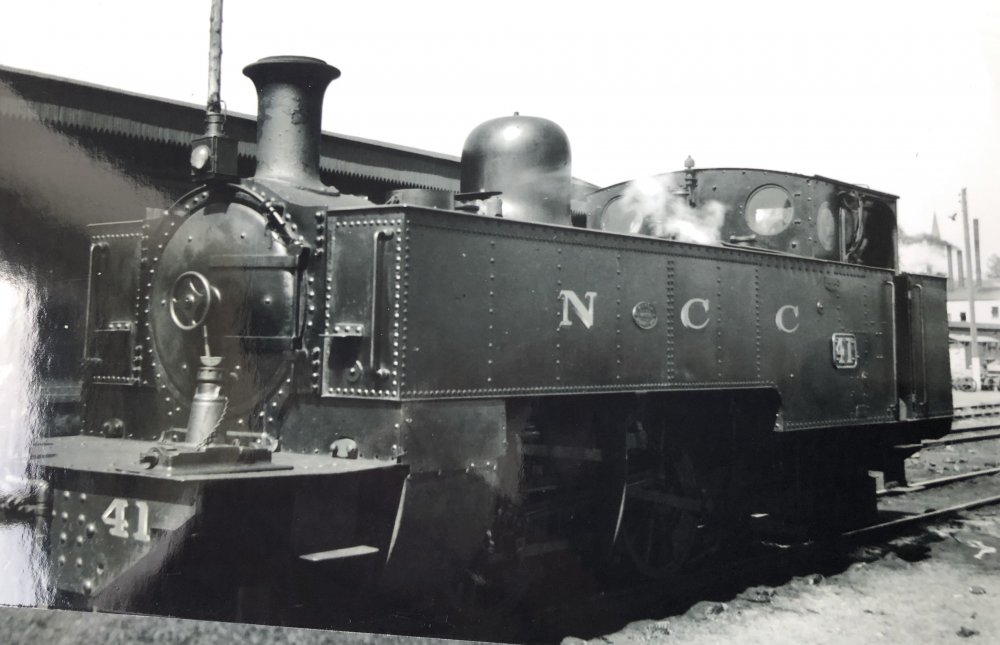-
Posts
15,831 -
Joined
-
Last visited
-
Days Won
393
Content Type
Profiles
Forums
Events
Gallery
Blogs
Store
Community Map
Everything posted by jhb171achill
-
What’s his link again?
-
Ah!! OK, thanks for clarifying!
-
Ah! I see.... I was wondering! My answer, however, does actually apply to at least 7 or 8 Fry-made items.....! Indeed, he’s been of great help to me in piecing together the history of the Malahide old layout, and providing details of the 7 or 8 people who built both the layout and the locos & rolling stock....
-
There's no Mallard in his collection now, Georgeconna. It doesn't appear on the highly detailed and 100% accurate inventory drawn up when it went from Dublin Tourism to Malahide castle, let alone after that (i.e. to the conservator, then to the new place). Thus, if such a midel existed (and I don't doubt you for one second!) it is clearly one of the models retained by members of the family. In between Cyril Fry's death and the sale of the collection to Dublin Tourism in the mid-70s by his widow (Nancy Fry), she gave a number of pieces to members of the family, in whose ownership they remain (and it is my understanding that these will remain in family ownership to be passed down as heirlooms). I am in contact with family members and hope to eventually have a complete list, for the record, of what other models he made. I have identified from photographs alone a small number of pieces which never left the family and were thus never included in any transfer to Dublin Tourism. Presumably if there's a Mallard, it's among them - it would be fine-looking piece of kit.
-
Fry’s one is roughly half a meter deep and about 2/3 of a metre long, but the overall platform roof behind it hasn’t survived.
-
Yes, I actually think he took this in 1944, though I haven’t an exact date! He took a good few on the NCC that year.
-
Cyril Fry’s main terminus station was called “New City”. This view shows the station building. It has survived, albeit minus its clock, and is currently in store pending possible future display. It’s a BIG beast.
-
Correct - the photo is from more or less the same angle as the bottom of the map.
-
The last look at the NCC narrow gauge for now - Ballyboley Junction, mid 1940s. Larne is off to the right, Ballyclare & Doagh line to the left. The erstwhile main line (closed finally in 1940) to Ballymena ran off to the left behind the station building, which would end up being demolished before the line closed. With the building still in position, but the station closed and neglected, this is in the days when only the goods train from Larne to Ballyclare paper mill siding was running, with all other services withdrawn. In early times, the Ballymena & Larne Rly. had originally called it Ballyclare Junction.
-
"First proper attempt"? It's superb!!
-
Can I have your address?
-
Lovely little building to restore, I would think..... In the 1990s it still had some faded UTA green paint on it.
-
Yer man's looking for about €50 for goods wagons you can pick up anywhere! I know that (a) beauty is in the eye of the beholder, and (b) if you can get it, take it; but I think the old adage that fools and their money are easily parted is more apt.
-
It’s just before, evidently. (A train had just left, that's why there's nobody about). He didn’t go there after it closed. He had visited it several times between 1947 and 1949, in connection with track inspection, and on one occasion to survey bridges for a feasibility study into converting it to 5’3” gauge!
-
Ballycastle station not long before closure. I suspect it was taken in 1949 when Senior inspected the track. The train for Ballymoney has left. It consisted of locomotive, 2 of the former corridor coaches and one goods van. Spare rails from a lifted siding sit in the foreground. There’s little goods traffic by now. Ominously, UTA buses lurk in the background.... (H C A Beaumont collection)
-
Do you know what - it was an absolutely miserable, dark dreary wet day when they moved her from Adelaide to Cultra; almost impossible to get a decent photo, but that looks good!
-
Lucky I said nothing about grey!!
-
Always thought that coach was a great "character"! Senior saw it often, though he seemed to remember it spent most of its time parked up. In later days, the railbuses and railcar handled almost all the passenger traffic.
-
No, Drew was unfortunately responsible for sowing much confusion about green colours - and wrong information! 800 was repainted in standard, ordinary CIE green in Inchicore before she left for Belfast. Thus, the green is CIE and the lining is CIE style. the variations in your photos are nothing more than the lighting in the museum. In daylight she's all the same. When built, she and her two sisters were painted a different shade of green, which they lost at first repaint into CIE livery after 1945. The GSR style still exists - ironically, on three models in the Fry collection which were never green at all! The trio of 800s had yellow and black lining, not the CIE black and white. Frames were green too on both GSR & CIE versions. There were three CIE greens in total. What 800 is in today, plus several preserved buses, is "standard" green, used the whole time 1945-63 on buses and road vehicles, and the few steam engines which weren't grey, and on carriages up to the mid-1950s. Around 1952 there was an experimental slightly lighter shade, the details of which have not survived. This was briefly applied to either 801 or 802 (I'd have to look it up) and one rake of new main line coaches. the powers that be apparently didn't like it, and standard green was used to repaint them. After 1955, carriages ONLY (not steam engines or road vehicles), plus repaints of (dirty) "silver" diesel locos, was in the lighter green seen in pictures of these in the late 50s / early 60s.
-
There ya go!! I wasn't aware of those. The whole set of them! The bogies would probably be a scratchbuild, though? As would a suitable locomotive.
-
Well done - that's a bargain! I have sourced two books which may be of interest to you; I will message you privately now.
-
Ballymoney it is, I've just discovered. Paddy - I've a few to put up over the next few days. Two more of the NCC narrow gauge, then we're off to Donegal..........! I found an interesting one of their only horse box. Once the virus restrictions are over I will be on the search for means of getting each of the negatives properly scanned. There are hundreds, though mostly of a family farm in Co. Offaly in the 1910 / 20s, and many of these being glass negatives. These go back to my grandfather's time; like my father, he took very few photos compared to what he COULD have done! I had thought of putting the lot on CDs, but CDs, despite the unrealistic promises of their inventors and initial sellers that they were indestructible - that's utter nonsense. Half the music CDs anyone has, don't work. I will probably put them on memory stick, but old-fashioned good quality paper prints still seem the most durable media. I also have a few dozen colour slides. He bought a colour slide camera about 1961, but with diesels becoming the norm, he lost interest in taking too many railway pictures shortly after he bought it. So almost all of the colour slides are of family holidays and so on, in the 1960s-90s. But he has some nice colour shots. There's a pic of a GNR lifting train near Armagh, as far as I recall, and some UTA steam. Retaining and restoring old photos has become a big issue now. As I am seeing with Fry's stuff, and the excellent work of several other gentlemen now in advancing years who I know, even the top quality colour film in the 1960s could gain bluish tints, and needs even a little treatment nowadays. Sadly, Fry used shockingly poor quality, cheap film, for most of his stuff, and a large number of his colour slides even now are only fit for the bin. Just goes to show the value of getting good quality stuff, no matter what we're buying; stingy or cheesparing financial attitudes to something meant to last is always a fool's game! Same with railway models..... though I digress........ Nothing, Midland Man, however - the NCC narrow gauge is in itself a fascinating subject. The fastest narrow gauge engines in Ireland, the carriages shown above which were the only corridor coaches on the narrow gauge, and among the very few with toilets - and the unique architecture, even, of the Ballymena & Larne; the ore traffic on the Cushendall line, and the later survival of the Ballycastle line (just about) into UTA days - also, a considerable variety of locomotives, many of unique design. Overall, the NCC narrow gauge lines would make a fascinating subject for a layout, but every single wagon, coach, locomotive, station building and even water tower would have to scratchbuilt. I would recommend you look out for the books by Edward Patterson from the 1960s, "The Ballymena Lines" and "The Ballycastle Railway". If you are interested, I am aware that the RPSI has a copy of one of them, but they are rare editions now and they can fetch up to £35 sterling on ebay!
-
NCC No. 41, freshly painted unlined black, as was the norm in the 1940s for their remaining narrow gauge locomotives. Exact date & location uncertain at this stage, though I may find it in later notes.
-
Can you imagine a whole train of them going through the Barnesmore Gap behind a 5A on a through Derry - Killybegs train! That’s the sort of thing they’d have been made for!
-
jhb171Senior was not known for having any interest in things non-steam (though Donegal railcars were of vague interest). Among his "stuff" is but one black'n'white of a 121, obviously taken in a hurry. The first main line passenger duty they became regular on was the "Enterprise", and this unidentified example is seen on this duty, though I am unaware of the location or date. I suspect it's somewhere in the Portadown - Goraghwood section, as he was doing track upgrading work there at that time. Every carriage and van green.......naturally, nothing would be black'n'tan for some 18 months into the 121's time..... The "Indian Summer" of the "Grey'n'Green" era.
.png.c363cdf5c3fb7955cd92a55eb6dbbae0.png)








